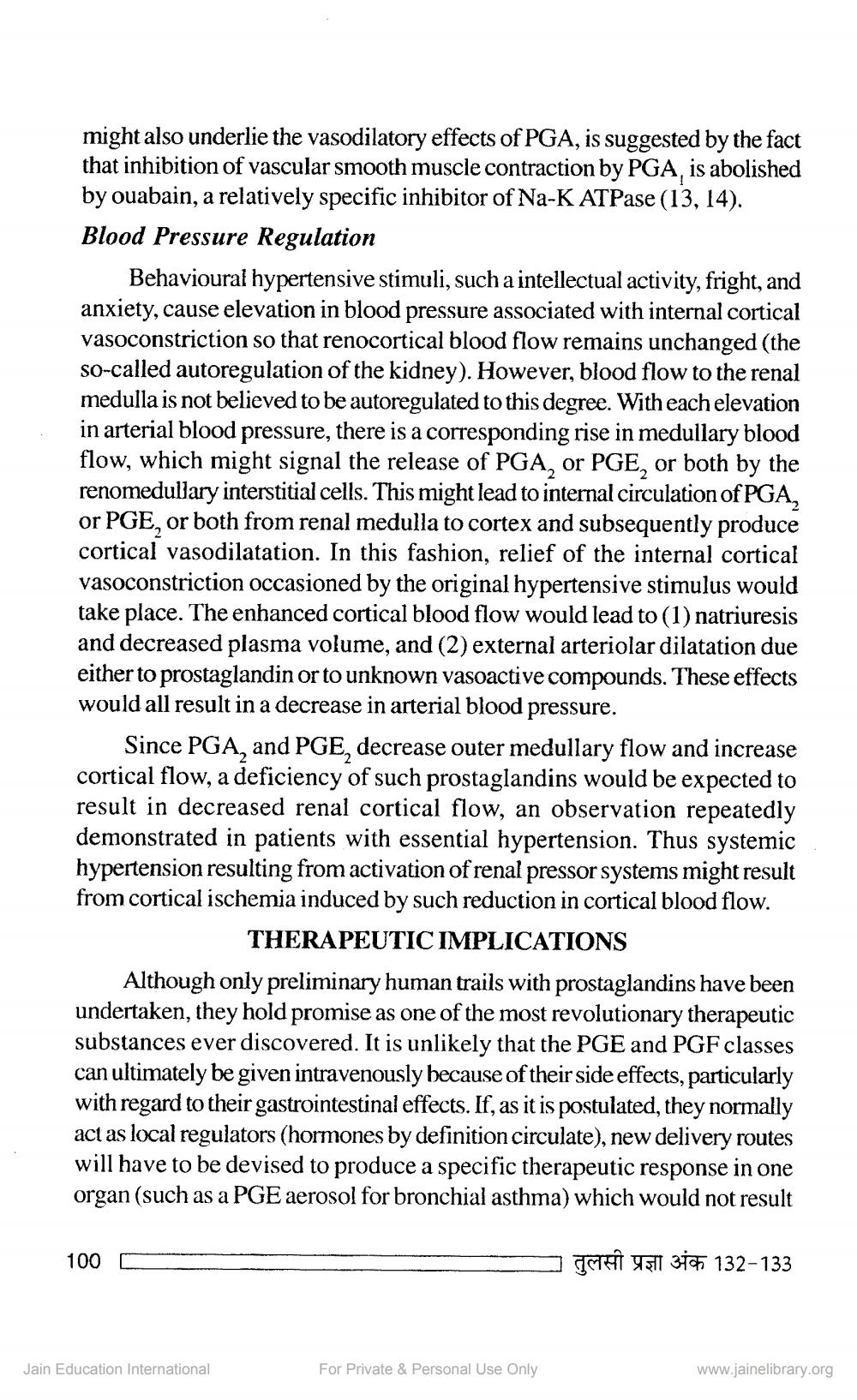________________
might also underlie the vasodilatory effects of PGA, is suggested by the fact that inhibition of vascular smooth muscle contraction by PGA, is abolished by ouabain, a relatively specific inhibitor of Na-K ATPase (13, 14). Blood Pressure Regulation
Behavioural hypertensive stimuli, such a intellectual activity, fright, and anxiety, cause elevation in blood pressure associated with internal cortical vasoconstriction so that renocortical blood flow remains unchanged (the so-called autoregulation of the kidney). However, blood flow to the renal medulla is not believed to be autoregulated to this degree. With each elevation in arterial blood pressure, there is a corresponding rise in medullary blood flow, which might signal the release of PGA, or PGE, or both by the renomedullary interstitial cells. This might lead to internal circulation of PGA, or PGE, or both from renal medulla to cortex and subsequently produce cortical vasodilatation. In this fashion, relief of the internal cortical vasoconstriction occasioned by the original hypertensive stimulus would take place. The enhanced cortical blood flow would lead to (1) natriuresis and decreased plasma volume, and (2) external arteriolar dilatation due either to prostaglandin or to unknown vasoactive compounds. These effects would all result in a decrease in arterial blood pressure.
Since PGA, and PGE, decrease outer medullary flow and increase cortical flow, a deficiency of such prostaglandins would be expected to result in decreased renal cortical flow, an observation repeatedly demonstrated in patients with essential hypertension. Thus systemic hypertension resulting from activation of renal pressor systems might result from cortical ischemia induced by such reduction in cortical blood flow.
THERAPEUTIC IMPLICATIONS Although only preliminary human trails with prostaglandins have been undertaken, they hold promise as one of the most revolutionary therapeutic substances ever discovered. It is unlikely that the PGE and PGF classes can ultimately be given intravenously because of their side effects, particularly with regard to their gastrointestinal effects. If, as it is postulated, they normally act as local regulators (hormones by definition circulate), new delivery routes will have to be devised to produce a specific therapeutic response in one organ (such as a PGE aerosol for bronchial asthma) which would not result
100
- G
HI HI 4% 132-133
Jain Education International
For Private & Personal Use Only
www.jainelibrary.org




